| |
|
|
|
|
| |
|
|
|
|
| |
Luftwaffe radar stations (Flugmeldemess-Stellungen). |
|
| |
|
|
|
|
| |
|
|
|
|
| |
Home |
|
| |
|
|
|
|
| |
Back |
|
| |
|
|
|
|
| |
Ln-Flugmeldeabteilungen
(E) z.b.V. |
|
| |
"Nachtjagd-Eisenbahnzuge". |
|
| |
|
|
| |
|
|
| |
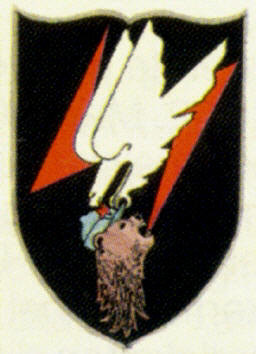 |
|
| |
Possibly the crest of NJG 100. |
|
| |
|
|
|
|
| |
|
|
|
|
| |
 |
|
| |
|
|
| |
|
|
| |
As it is evident from the
illustration above these units made up a DUNAJA Stellung on rails. The
concept was undoubtedly conceived in order to provide some measure of radar
coverage and control especially on the Eastern Front. There are,
however, many documented instances where these trains were also employed in
France, Bulgaria, Poland and Germany proper, in areas where the existing
radar coverage was insufficient. Little is
known about the exploits of these units and very few pictures have been
published. These units worked extensively with NJG 100 and they were established in mid 1942. |
|
| |
|
|
| |
The history of these units is not very well covered in the published literature. Based on this passage from Hoffmann: |
|
| |
|
|
| |
Zur Einsatzführung der im Luftflottenbereich
vorübergehend befindlichen Nachtjagdgruppe trafen im Juni [1943] fünf der neun vorhandenen Eisenbahn-Nachtjagd-Leitkompanien der II./Ln-Rgt. 42 (spätere Ln-Flugm.-Abt. (E) z. b. V. 21) aus dem Raum Berlin und Westeuropa ein. Diese "Nachtjagd-Eisenbahnzüge" verlegten
auch vorübergehend mit Nachtjagdstaffeln in den Charkower Raum (Luftflotte 4). |
|
| |
[1943] my insert. |
|
| |
|
|
| |
We were lead to believe, that ALL the trains left for the Eastern front after a shot employment in the Berlin area and in Western Europe. However it could also be interpreted as the 5
trains deployed to the Eastern Front and 4 remained in Western Europe. A while back I got a Gliederung of II JK (map)
from from JAN 1945, and here suddenly were 3
Nachtjagd-Eisenbahnzüge,
which appeared out of "nowhere". Based on recently received evidence, it can now
be established that some trains operated in Western Europe throughout the war.
One of these units was Ln-Flum.Messzug (E) z.b.V. 16, the others must have been 8. and 9./Ln-Flugmeldeabteilungen (E) z.b.V. 22.
If one reads Hoffmann carefully they are also strangely absent form his description of the organization in Eastern Europe. Based on the latest information received, and a re-analysis of the material on hand hand, I think this
is the right interpretation. Based on the known deployment in FEB 1945, and the absence of these units on 1944 maps, my conclusion at this time is that the units were: |
|
| |
|
|
| |
1./Ln-Flugmeldeabteilungen (E) z.b.V. 22. RAUBVOGEL 1. |
|
| |
8./Ln-Flugmeldeabteilungen (E) z.b.V. 22. RAUBVOGEL 8. |
|
| |
9./Ln-Flugmeldeabteilungen (E) z.b.V. 22. RAUBVOGEL 9. |
|
| |
Ln-Flum.Messzug (E) z.b.V. 16 JUNO. |
|
| |
|
|
| |
A unit cooperated with Kdo NJG 5 in Southern Germany in the winter of 1942. This could be SUMATRA I,
which had their garrison at Landsberg a. Lech. |
|
|
|
|
|
|
|
In February 1943 BUSSARD 1 was deployed to
Plaintel and BUSSARD 2 was deployed to Ploumerien (sic). The correct
name was probably Plounerin. They controlled
aircraft from a Schwarm of 10./NJG 5 engaged in the
protection of the submarine bases at
Lorient and St. Nazaire. |
|
|
|
|
|
| |
On 22 MAR 1943 SUMATRA II relieved BORNEO II at Döberitz. |
|
| |
|
|
| |
Additionally the following units were deployed in Western Germany in the winter of 1943 -1944. |
|
| |
|
|
| |
3./Ln-Flugmeldeabteilungen (E) z.b.V. 22. RAUBVOGEL
3. |
|
| |
4./Ln-Flugmeldeabteilungen (E) z.b.V. 22. RAUBVOGEL
4. |
|
| |
|
|
| |
|
|
| |
We know from BAMA RL 8/88, that 1. Zug 8.
(Flugmeldemess-Eisb)./Ln-Rgt 42 (CELEBES I) was declared operational and located at the station of St.Trivier, France on 19 August 1943. On 20 August 1943 2. Zug 8 (Flugmeldemess-Eisb.)./Ln-Rgt 42 (CELEBES II?) was established. It
is reasonable to assume, that this unit could be operational in October. II./Ln-Rgt 42, which was the parent unit of 8. Kp., was later
renamed Ln-Flugm.-Abt. (E) z.b.V. 21. In connection with the "streamlining" of the organization, these units were renumbered as parts of Ln-Flugm.-Abt. (E) z.b.V. 21 and 22. |
|
| |
|
|
|
|
| |
From the same source as mentioned above it is known, that the following trains obtained kills on the Eastern
Front in AUG 1943: SUMATRA I, II and III; JAVA I; BORNEO I, II
and III; STEFFI I, II and III. |
|
| |
|
|
|
|
| |
From the scanty information obtainable through published sources and pictures, it is known, that the trains would
normally be deployed on a number of sidings on a railway yard. When the various wagons had been positioned, the locomotive would leave, only to come back, when the train was due to re-deploy. Set-up in a new site took 9 hours and preparation to move out
took 4 hours. |
|
| |
|
|
|
|
| |
Not alone did the unit have a name, so did the train. The following have been identified. |
|
| |
|
|
|
|
| |
|
|
Unit. |
Name |
Name of train |
|
1./Ln-Flugm.-Abt. (E) z.b.V. 21 |
SUMATRA I |
Anna Braun |
|
2./Ln-Flugm.-Abt. (E) z.b.V. 21 |
SUMATRA II |
Inge Braun |
|
3./Ln-Flugm.-Abt. (E) z.b.V. 21 |
SUMATRA III |
Lotte Braun |
|
|
|
|
|
|
|
|
|
|
Based on sources obtained in late 2019 there are strong indications that
RENNER 1, 2 and 3 also were
"Nachtjagd-Eisenbahnzuge" . |
|
|
|
|
|
|
|
|
|
Organization. |
|
|
|
|
|
|
|
|
|
Deployment mid 1944. |
|
| |
|
|
|
|
| |
.JPG) |
|
| |
Initially the Stellung
consisted of a number of personal wagons and flatbeds for a total of 22 wagons. Later 2
Flak wagons with 2 cm quads were added. It was equipped
with 2 Freyas and 2 Würzburg-Riese, thus enabling the
Stellung to perform
Seeburg-Lichtenstein Verfahren, but not
Himmelbett. |
|
|
|
|
|
|
|
 |
|
|
|
How the wagons could be arrayed, based on a
captured German document. |
|
| |
|
|
| |
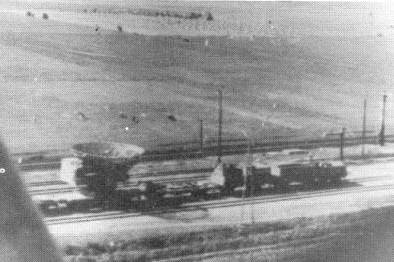 |
|
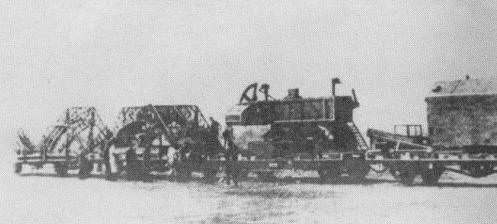 |
|
|
|
A Würzburg-Riese in operating
configuration. |
|
A disassembled Würzburg-Riese in
traveling configuration. |
|
|
|
|
|
|
|
|
|
|
|
|
|
 |
|
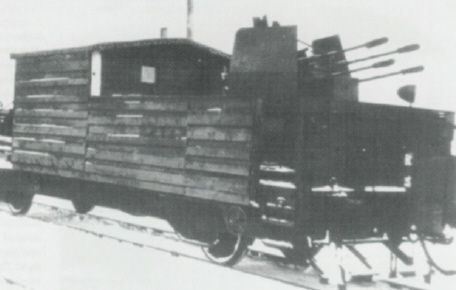 |
|
|
|
A Würzburg-Riese in operating
configuration. |
|
Possible configuration for one
of the Flak pieces protecting the Stellung. |
|
|
|
|
|
|
|
For additional details please see: |
|
|
|
FuSE65-E |
|
|
|
|
|
| |
.jpg)
|
|
| |
The deployment of SUMATRA and BORNEO 31 AUG 1943. |
|
| |
|
|
| |
.jpg)
|
|
| |
The deployment of SUMATRA and BORNEO JUN 1944. |
|
| |
|
|
| |
%20zvB%20700245%202.jpg)
|
|
|
|
Deployment FEB 1945. |
|
|
|
|
|
|
|
Ln-Flum.Messzug (E) z.b.V. 16.
JUNO. |
|
| |
|
|
|
|
| |
1./Ln-Flugmeldeabteilungen
(E) z.b.V. 21. SUMATRA I. |
|
| |
|
|
|
|
| |
|
|
|
|
| |
|
|
|
|
| |
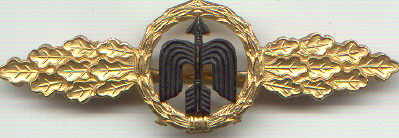 |
|
| |
|
|
|
|
| |
Back |
|
| |
|
|
|
|
| |
Home |
|
| |
|
|
|
|
| |
|
|
|
|
| |
|
|
|
|







.jpg)
.jpg)
%20zvB%20700245%202.jpg)
![]()